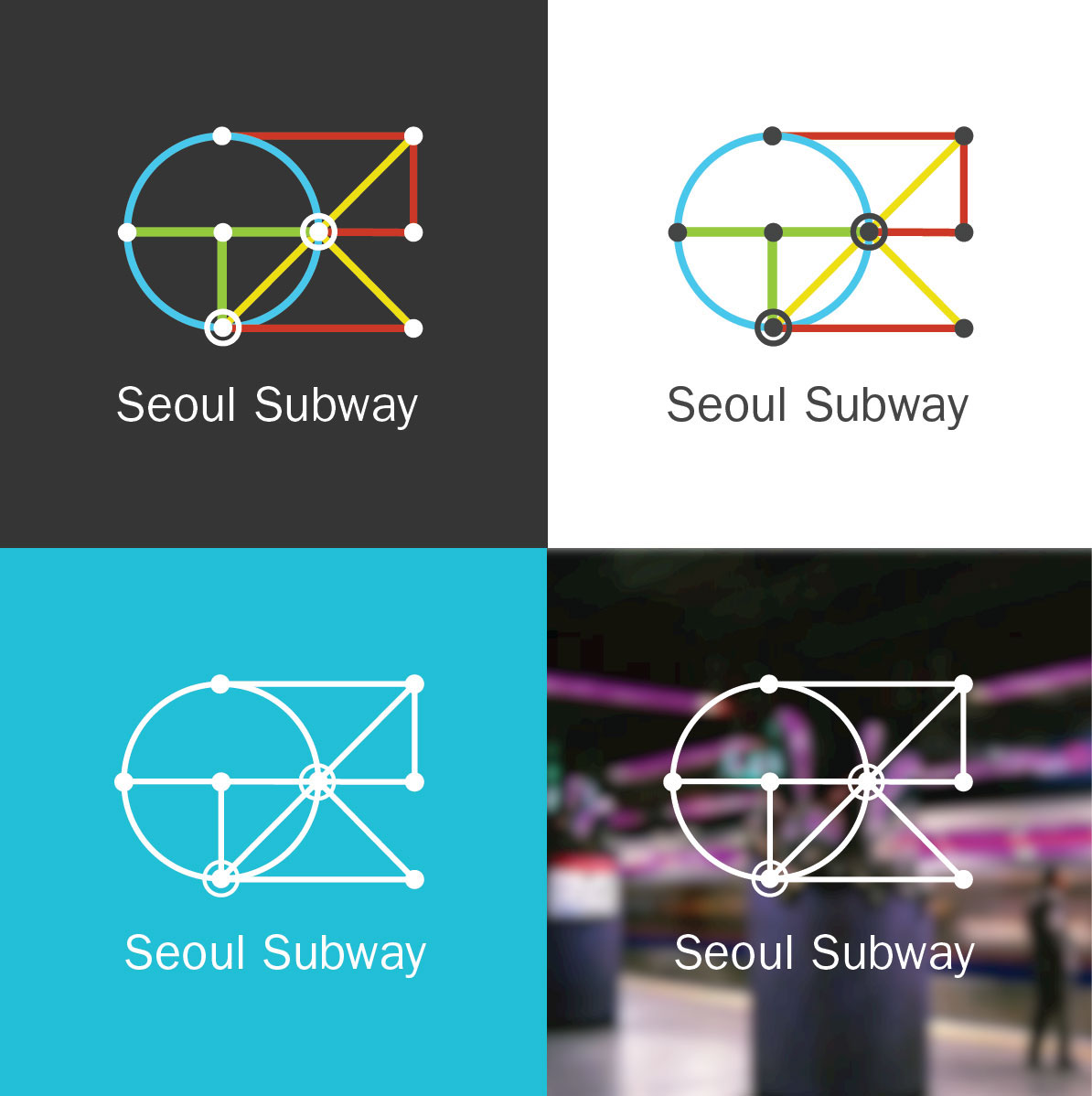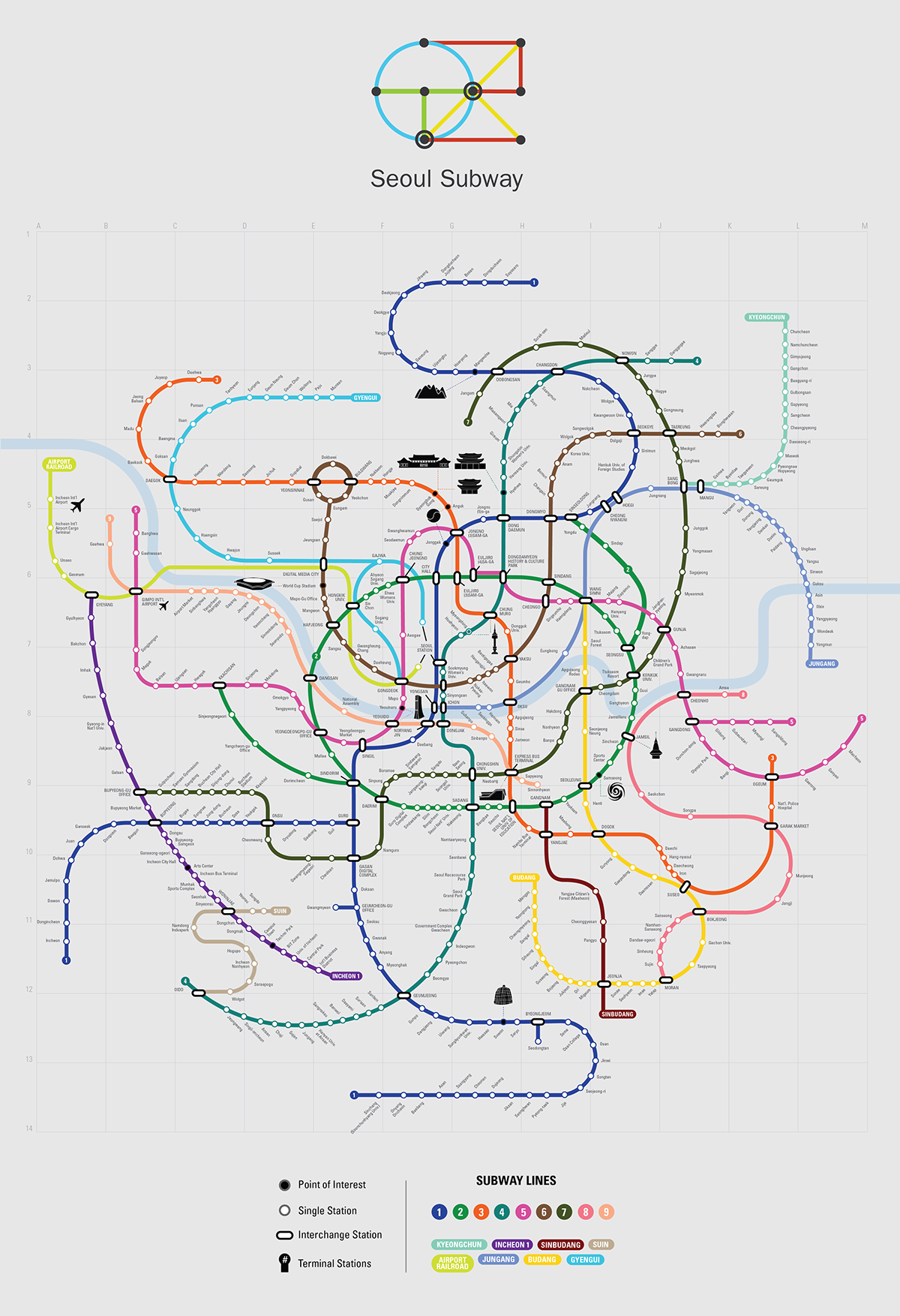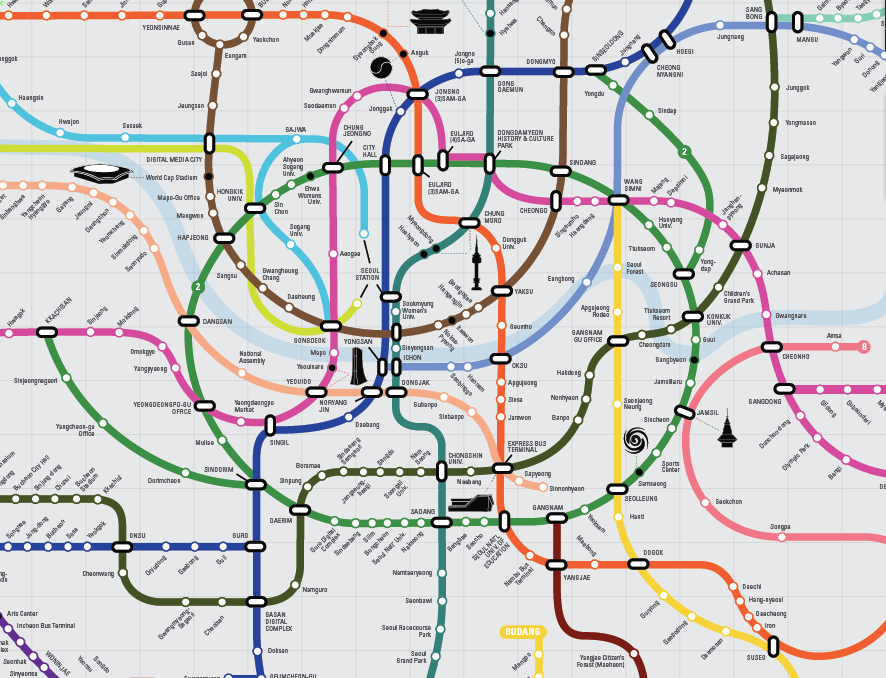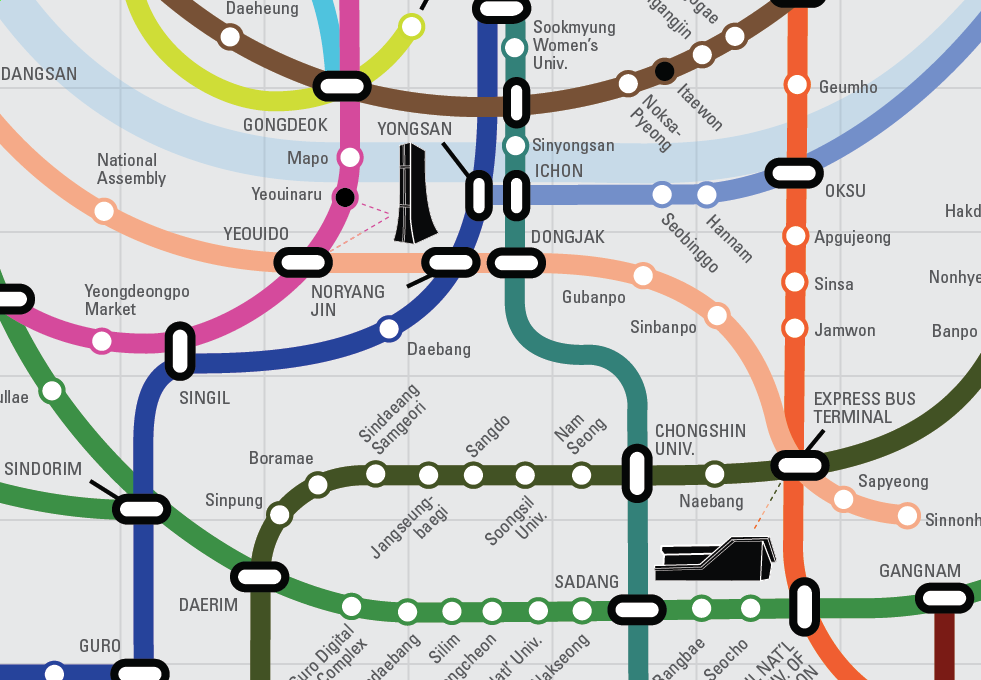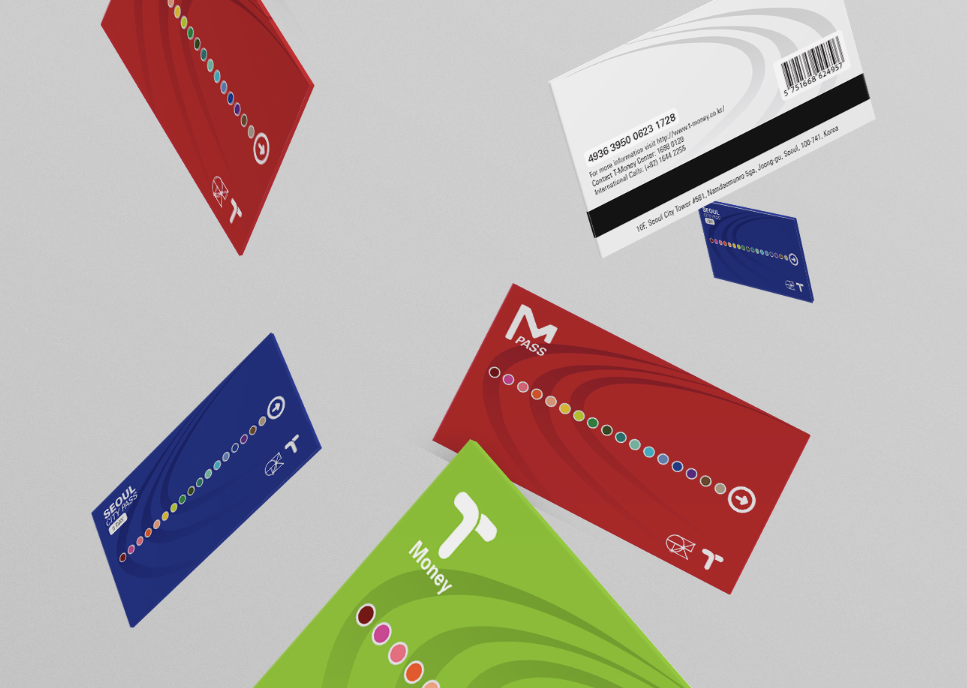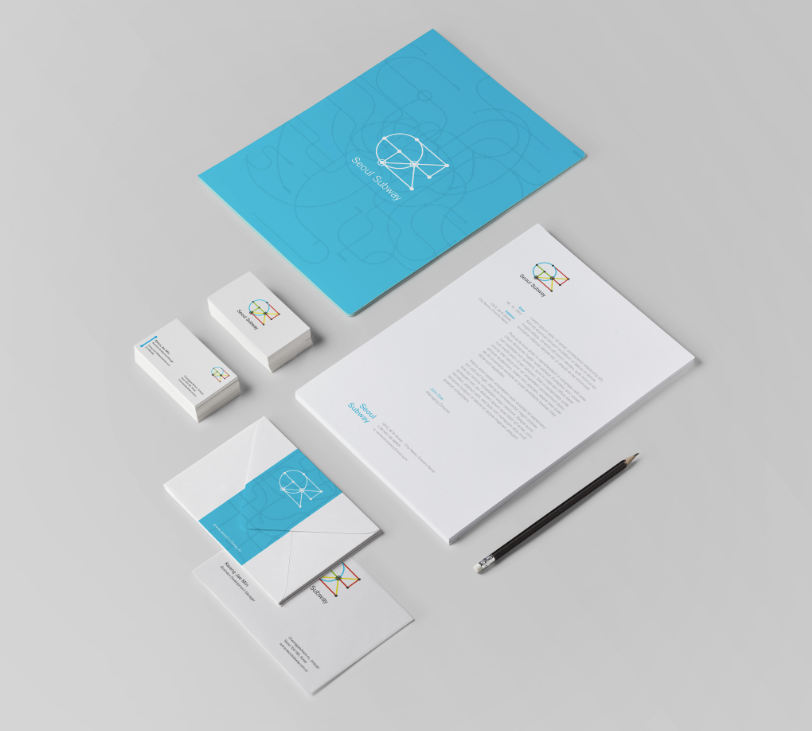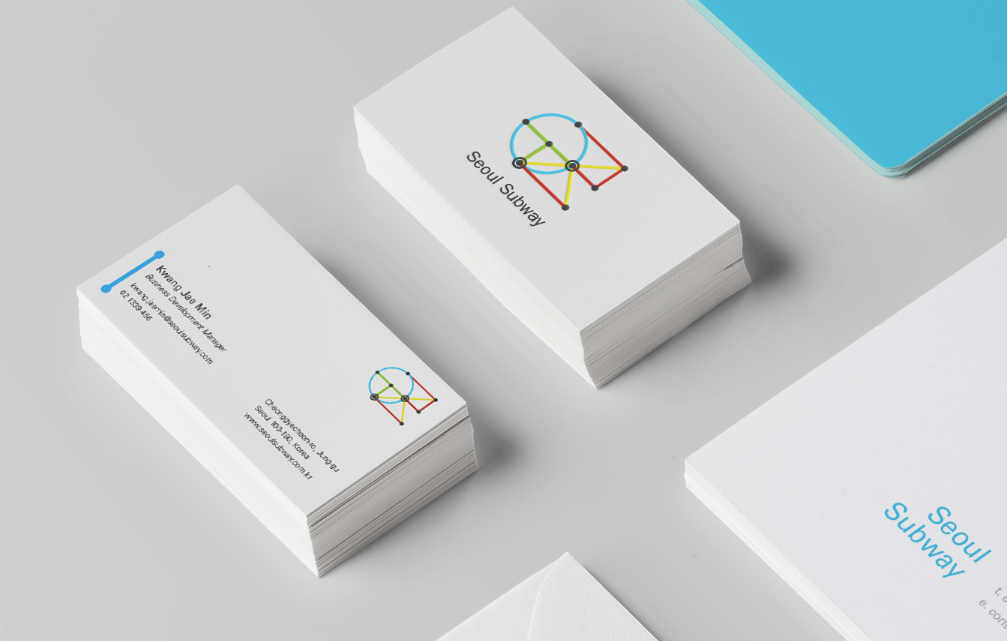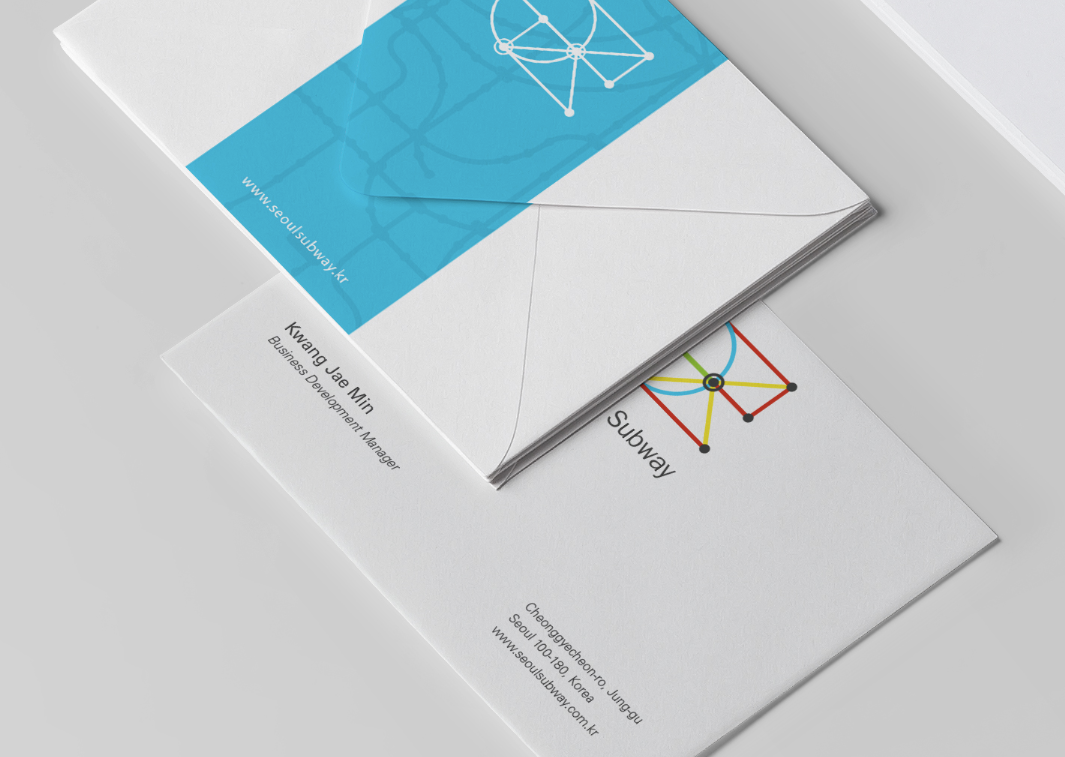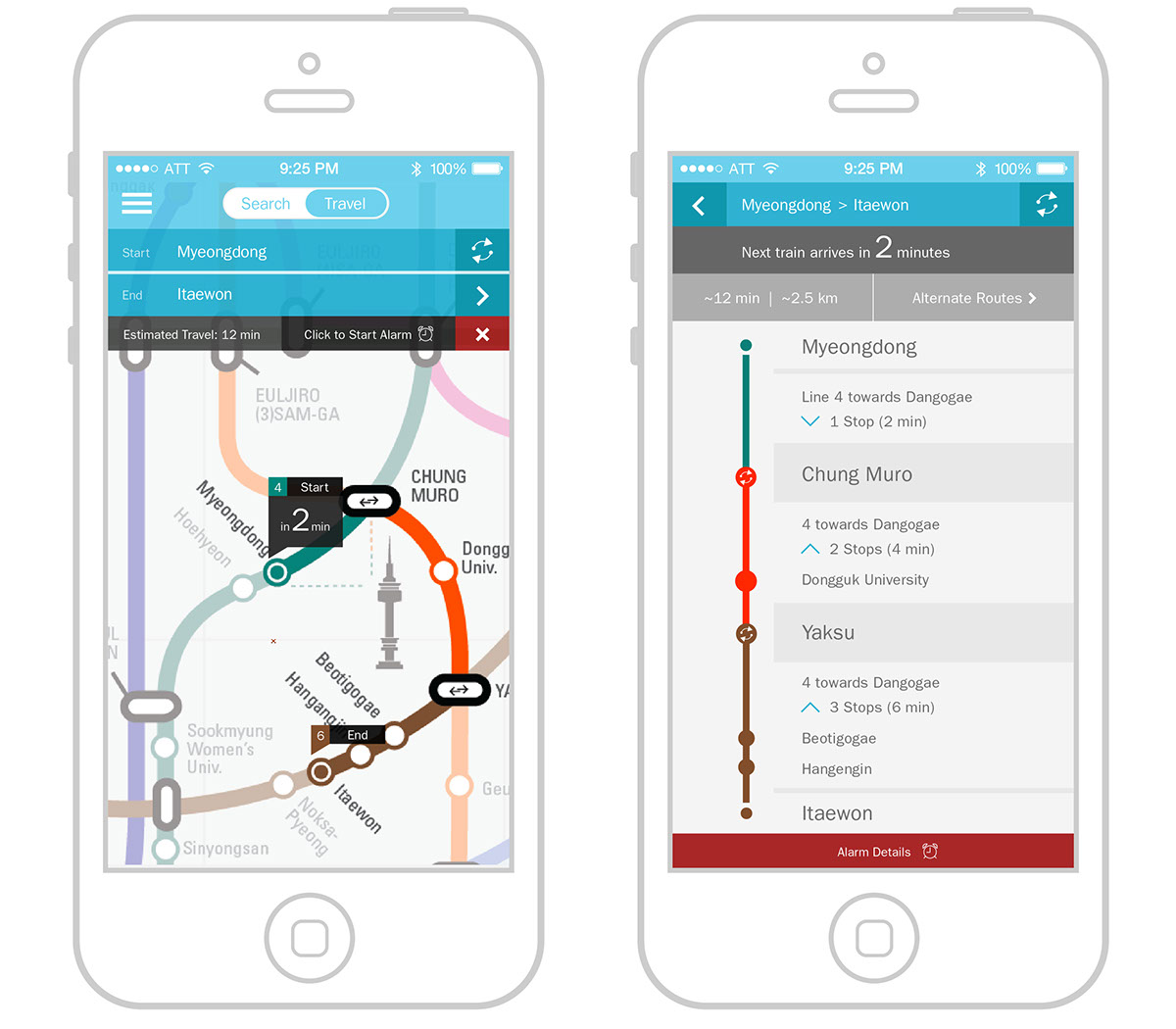Seoul, Korea
Subway System Re-Design
For this project, I chose to re-design Seoul's Subway System because I felt that their current branding is very poor and is a stain to humanity's vision. I decided to take charge and revamp their current logo, map, subway signage, and ticketing system.
Problem
(1) Seoul’s current subway map is extremely cluttered and contains many diagonal lines that create a complicated/overwhelming appearance/impression to first time viewers. (2) Since there are so many names, the text is harder to read since the font is thicker and larger than it should be. (3) The subway map does NOT show different attractions/tourist spots. (4) They have an efficient system and some of the best technology, but their brand image does not currently represent their strengths. (5) Seoul is thriving with an abundance of culture and style. From its historical temples to its modern, fast-paced city filled with skyscrapers and shopping districts, the current design does not reflect these qualities. (6) There are no hierarchy in the map and colors indicading the lines are confusing.
Strategy
Seoul’s map needs a friendlier and more efficient layout. To make it more welcoming, I will create a more simple, approachable design by maintaining use of a white background to allude to Korea’s cleanliness, efficiency, and innovative technology. I think a curvilinear-based structure will give it a more approachable feel as well. Seoul’s map also needs to be unified and needs to wear a new design which represents their “rapid, energetic and friendly” system. To be the symbolic public transportation system, it should work in unison with the culture of the city. Combining the subway map, and the geographical map, most of the major stations are located in the center of Seoul.
Background on Seoul
The Seoul Metropolitan Subway, located primarily in Seoul, South Korea, is the world’s most extensive subway system by length, the world’s second largest subway by number of stations after New York City Subway and the world’s second most highly used subway after Tokyo Subway.
All lines use the T-money smart payment system utilizing RFID and NFC technology for automatic payment by T-money smart cards, smartphones or credit cards and one can transfer to any of the other line within the system for free, with the exception of AREX on Yeongjong Island (extra charge applied depending on distance), Sinbundang Line (extra flat charge of 700KRW) and Uijeongbu LRT, which has a separate fare structure.
Nicknamed “super highway”, it is notable for its cleanliness, ease of use, arrival times accurate within seconds and innovations such as the world’s longest circular line, completely driverless lines such as the U Line and DX Line, which is a high-speed subway operating at up to 100km/h or three times faster than conventional subway speeds. Real-time subway arrival times are available for all lines provided through giant LCD screens at all stations, along with apps for smartphones. All directional signs in the system are written in both Korean and English. Station signs and some maps also display Hanja. The pre-recorded voice announcement in the trains indicating the upcoming station, possible line transfer and exiting side are all in Korean followed by English, and in some cases Japanese then Chinese.

Above is Seoul's current subway map

When first re-designing the subway map, I wanted to analyze the basic structure.

After analyzing the basic line structure of the map, I proceeded to mapping out a basic layout of what I was envisioning.
